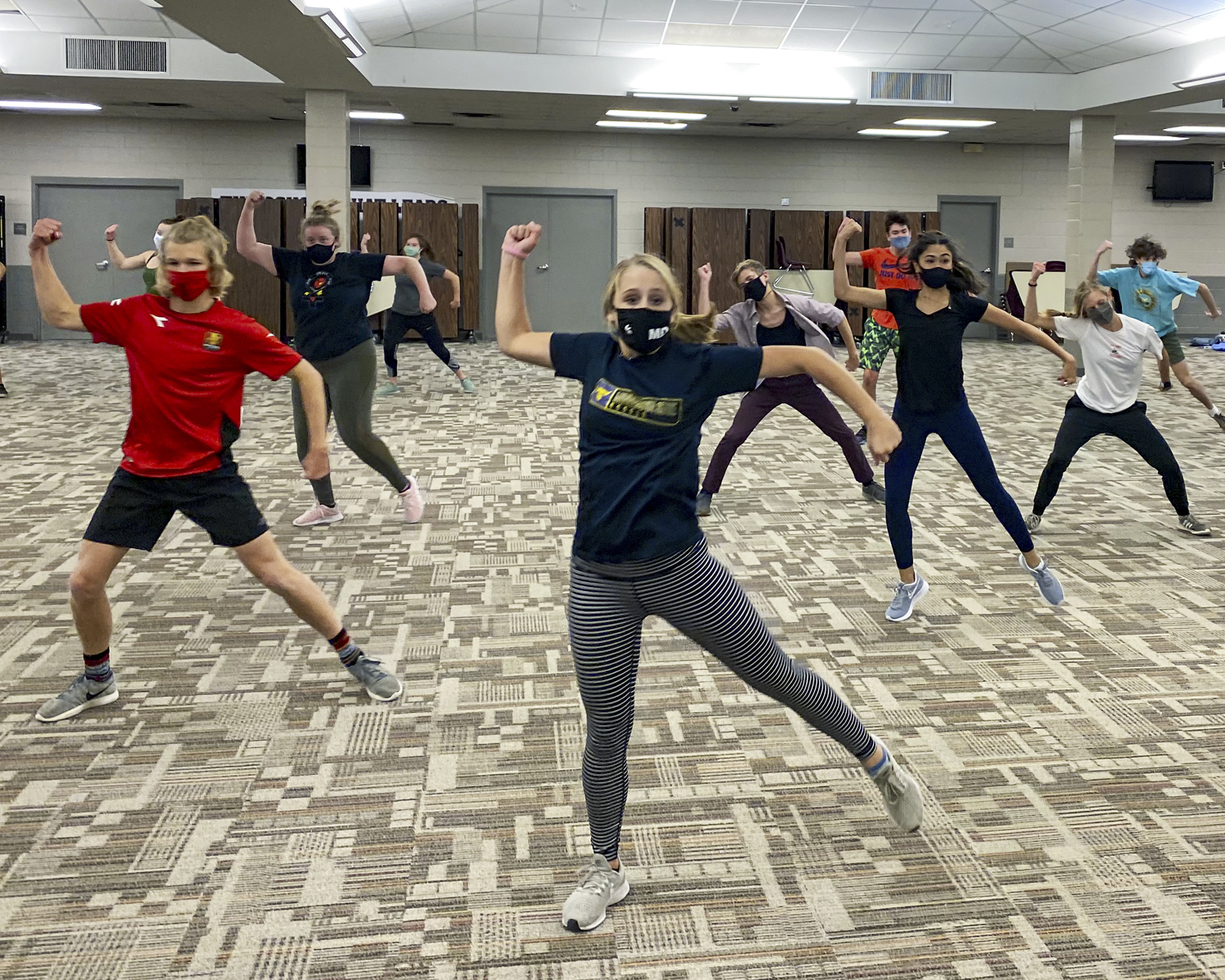
Early on in the Coronavirus Pandemic, choirs made the national news, and not in a good way. In March of 2020, in Skagit County, Washington, the Centers for Disease Control and Prevention reported that following a 2.5-hour choir practice attended by 61 people, including one person showing Covid-19 symptoms, 32 confirmed and 20 probable secondary Covid-19 cases occurred. Three of those choir members were hospitalized, and two died. Transmission was likely facilitated by close proximity during practice and augmented by the act of singing.
While social distancing is effective in normal social interactions, the Infectious Diseases Society of America says singing can produce a substantially larger number of respiratory droplets and aerosols than speaking, as it is louder and sustained for longer durations. In addition, the CDC says certain persons, known as super-emitters, release more aerosol particles during speech than do their peers, and might have contributed to this and previously reported Covid-19 superspreading events.
So how do directors keep their students safe in the face of so much risk?
Jordan Dobbins, Associate Choral Director at Starkville High School in Starkville, Mississippi, said her group has enacted many new changes to keep everyone well.“We are wearing masks at all times,” she explains. “We are strategically spacing the kids out, keeping strict assigned seats, and facing the same direction when singing.” These changes have not come without their own challenges, however. “The hardest thing I have found is not being able to model the vowel shapes for the new singers and, of course, teaching brand new singers on a virtual platform has been a challenge.”
Dr. Christy Lee is Assistant Clinical Professor of Music and Collaborative Pianist for the Choral Area in the Mississippi State University Music Department. Lee says MSU has made it possible to enact safety measures while not losing any time singing live.
“Unlike most higher education choral programs across the US and the world, all four choirs in the MSU choral program have been meeting and singing live this semester during the COVID pandemic,” said Lee. “While it has proven to be a challenge to implement safety measures such as reduced numbers in each choir, social distancing in our rehearsal room, wearing specialty singers resonance masks, and doing a pre-recorded concert as opposed to live performances, it is worth the effort in order to make music on a regular basis. We have stayed safe and healthy.”
Lee says it has helped, in fact, to continue singing through the pandemic as a way to deal with the stress and anxiety Covid-19 has brought to everyone’s lives. “I cannot speak for all of the 200+ members of the choral department team, but I think it is safe to say for all of us that the healing power of music that we can make together has gone a long way in helping us through these challenging months.”
While Lee and Dobbins both work primarily with choral groups, show choirs have the added challenge of incorporating dance, props, partnering, and costume changes.
Toney Keeler, Director of Choral Activities at Northwest Rankin High School in Flowood, Mississippi, said in preparation for the return of students their group’s Choral Hall was significantly decluttered to allow for social distancing.
“Our multi-level platforming was dismantled based on the advice of research concerning the spread of aerosol particles during and after rehearsals,” Keeler said. “Our parent support organization also purchased several medical-grade HEPA filters to assist with the air turnover in our rehearsal space.
Keeler added Northwest Rankin had a four-tier plan for the safe return of students. “Tier A involved virtual rehearsals and choreography sessions,” said Keeler. “Tier B introduced small rehearsals in sectionals for shorter periods of time with adequate time in-between sectional rehearsals to ensure proper air turnover in our rehearsal spaces.”
Keeler continued, “Tier C of our safe return to rehearsal implemented longer rehearsals with the entire ensemble. Tier D of our plans will include performances, masked with limited audiences, and competition appearances. Tier D will be realized with the help and advice of our School District’s COVID-19 task force.”
Denise Lee, Show Choir Director of Take One Show Choir at New Hope High School in New Hope, Mississippi, discussed the ways in which Covid-19 has affected her group.
“The classroom is cleaned and disinfected between each block/period, and everyone wears a mask at all times,” she said. “We are employing social distancing as much as possible for our classroom size and going outside when possible.”
“We use props, but we do not share props,” Lee said, “and props are cleaned after each use. Currently, we sing or we dance but we are not doing both at the same time unless we are outside and can properly space students.” Lee said changes have also been made in terms of the types of choreography and costumes they’re using.
“We are not allowing any type of partner dancing or changing placements in the middle of a song,” she said. “We also will not have costume changes so that we can avoid multiple people trying to change costumes in a small, enclosed space.”
Lee went on to say all choreography and parts are placed in Schoology so that it can be accessed from home should anyone have to quarantine, and in place of in-person meetings, parents are receiving information via newsletters, emails, and Remind 101.
Kassy Krause, the director of Wheaton North High School “Flight” outside of Chicago, Illinois, said Covid has taken far more from her kids than she’d prefer, but they are figuring it out — together. In fact, the “together” part has been what has mattered to her group the most.
“The community that show choir provides, both within the walls of our own rehearsal spaces and beyond, is paramount in the healing process that these kids are so desperate to find,” said Krause. “They are bummed they can’t sing together in the same room and that they are losing a season of competitions, yes, but they are very vocal about how grateful they are to still have SOMETHING. When I surveyed the kids before designing the season around Covid guidelines, not one student mentioned competitions, elaborate costumes, or travel. The things they were most scared of losing were the scenarios that brought them closer together.”
Activities that her group hold dear include all-day Saturday rehearsals like “Mandatory Fun Lunch,” which allows them to move beyond comfort zones and meet all of the newbies. Other activities include the big Show Reveal (the day they learn what their show will be), and their beloved Dollar Store Gifts and candy tradition, Secret Santa.
Krause said she was mainly floored, however, by the students continued dedication to excellence. “Overwhelmingly so, the kids asked to be held to the high standards they’ve become accustomed to,” she said. “They crave being held to a high standard and want that to continue whether or not the show ever sees the light of day.”
It’s clear that performing groups all around the country are rising to the unique challenges Covid-19 presents. As long as the students still get to come together and enjoy each other’s company, everything else will fall into place.
As Denise Lee says, “We continue to instill hope in our students that this too shall pass.











